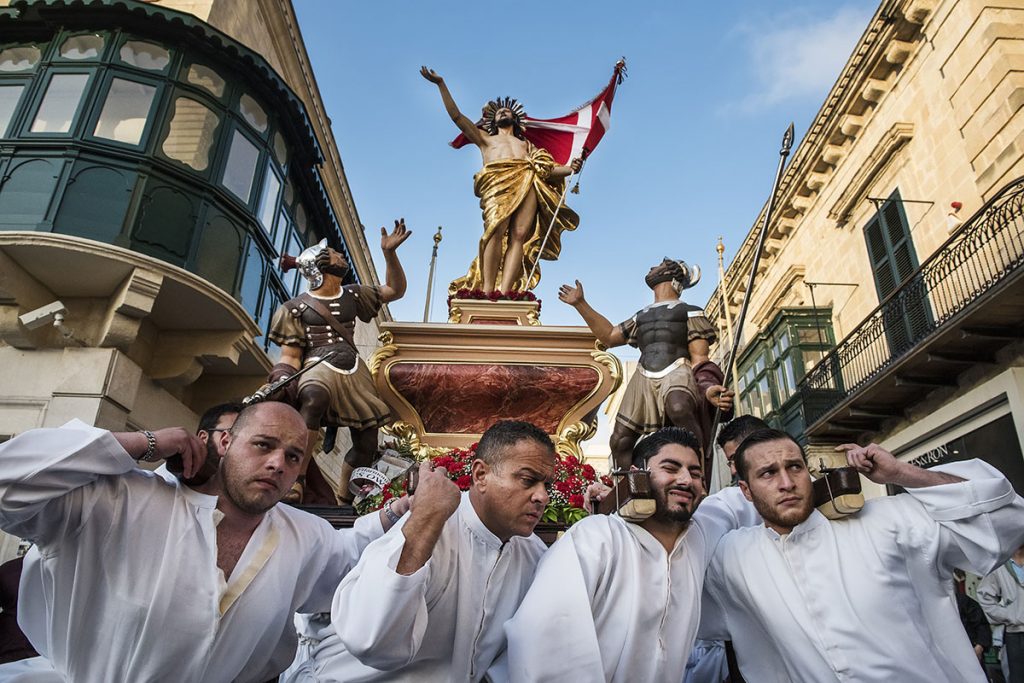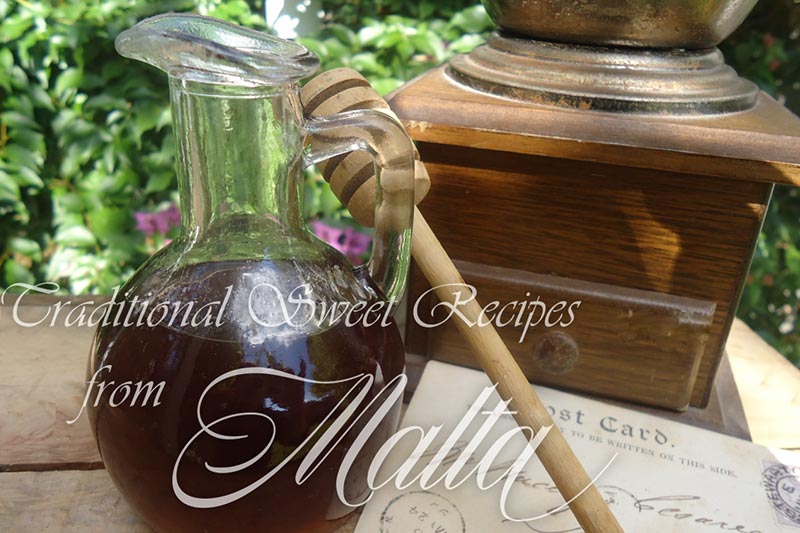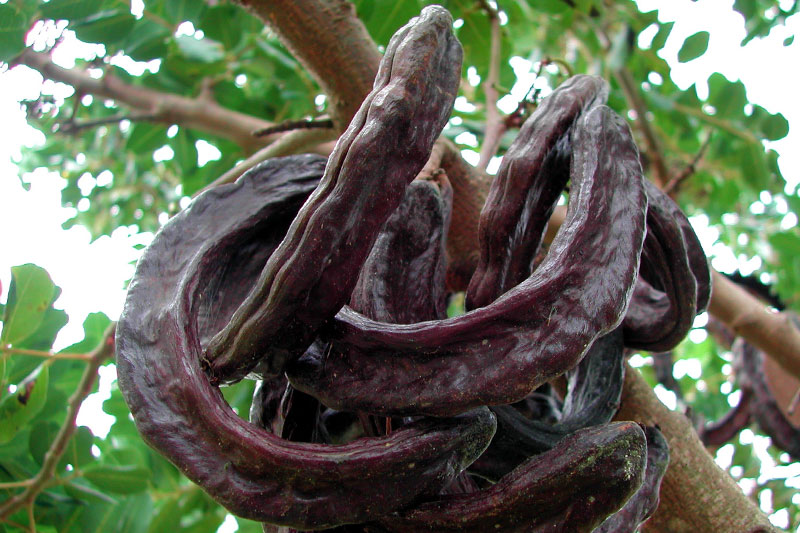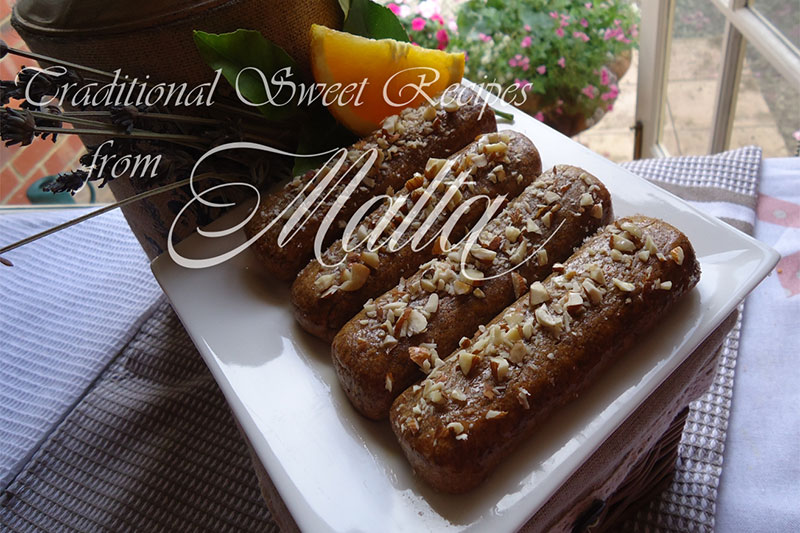
Easter celebrations are the sweetest in Malta
Easter is the most significant time within the Maltese Calendar year which begins with lent. Ash Wednesday marks the beginning of Lent and takes place 40 days before Easter Sunday.
A hard-sweet confection that is made during lent is known as Carob Sweets-Karamelli tal Harrub. These sweets were available during the fasting period of lent and many children from decades of by gone days speak fondly of vivid childhood memories, eating copious amounts of the readily available sweet.
For those that like to make their own carob syrup rather than store bought, carob syrup is relatively easy to make. Carob Syrup-Gulepp tal-Harrub is also versatile for other applications. There are many health benefits derived from carob, including high nutrients and anti-oxidants that act as an anti- inflammatory. It also assists with digestive issues due to its tannin content and has been traditionally used as a natural remedy for coughs. Another way to utilized home-made carob syrup is to make Honey Rings – using it to replace the treacle or golden syrup. It is also delicious drizzled over ice-cream or freshly made hot pastries such as Zeppoli tal San Guzepp or even the Kwarezimal as a different option to honey.

Carob Syrup

Carob Sweets

Carob Pods or St Johns Bread
Carob has been used for centuries as a natural remedy to treat many medical conditions. It has had a high resurgence in recent times, being rediscovered and recognized once again for its multiple health benefits with the ability to boost the immune system.
Carob contains calcium, helping the nerves, muscles and heart to function well. It is high in fibre, gluten free and caffeine free. Carobs nutrient and composition properties have anti-cancer, anti-diabetic and neuroprotective abilities. Talk about a Super food!
All obtained from a humble Carob tree in the Mediterranean also known as Ceratonia siliqua producing these wonderous pods. Carob pods are also called Locust bean or St Johns Bread. Carob is available from health food stores in a dried form all year round when it cannot be found fresh in season.
Kwarezimal
This is another lent sweet. The word Kwarezimal– is derived from the Italian ‘Quaresma’ (Quadragesima in Latin) referring to the forty days of lent. During lent the restriction of certain foods were more stringent, omitting particular foods.
Lent has traditionally included elements of fasting and denying ourselves more indulgent richer foods to symbolize our small sacrifice for Christ’s suffering and sacrifice he endured for 40 days and nights walking and fasting through the dessert.

Kwarezimal
Figoli
Figoli are Character shapes and figures made of sweet pastry that are filled and baked. The word figoli was derived from the figures and shapes from which these sweets are created.
Due to Christs suffering, crucifixion and resurrection, Easter has long been associated with life and rebirth. Traditionally made during the holy week and eaten on Easter Sunday. Some children take their figoli to the risen Christ procession on Easter Sunday in order to be blessed.
Easter Sunday commemorates Christs rising from the dead. Special cutters can be purchased to create your favourite shapes, or you can create your own template by drawing your design on a light cardboard to allow you to trace and cut the pastry.

Figoli
The classic almond filling is the most popular and traditional filling used. Other filling options include a date filling which is also suitable for those with nut allergies, or a fig filling which is used to make the sweet fig rolls. (Fig Roll Recipe in Volume 2 Traditional Sweet Recipes from Malta)
Figoli are traditionally decorated with Royal Icing or Chocolate. An older traditional Style of decorating the figoli includes a colourful paper character face of a male or female, (oleograph) which is adhered & positioned with icing. Some also use foil to which colourful royal icing piping is applied.
Marzipan can also be used to create plaques for Easter messages and smaller figurines to decorate the top for more elaborate designs.
Recent times have seen the use of sugar paste that is rolled out and applied as another decorating method. Many households make their own Figoli for family and friends, making it a special traditional family Easter event.
Good Friday & Maundy Thursday
In the last week leading up to Easter, there are many street processions all over Malta and Gozo that reinact Christs final hours here on earth before he was crucified on the cross. The passion of the Christ in his crucifixion, death and resurrection. Many parishioners participant by dressing in biblical characters during these processions.
The Thursday before Good Friday is known as Maundy Thursday. On Mundy Thursday remembrance of the last supper takes place. A tradition called ‘Seba Visti’ is also observed where Christians visit seven churches and alters to reflect and pray. Upon the arrival of Good Friday churches remove internal decorations which are replaced by displays of red colour around the building to symbolize the blood of Christ. On Maundy Thursday and Good Friday, a sweet bread known as Apostles bread is sold throughout Malta. Bread vans patiently situate themselves outside central churches awaiting parishioners after mass services with fresh Apostles’ Bread, also offering other Easter treats to purchase including Carob Sweets and Kwarezimal.
Holy Thursday also known as Maundy Thursday highlights the event of the last supper of Jesus with the apostles. The term ‘Maundy Thursday’ is derived from the Latin word ‘mandatum’ meaning commandment.
By the symbolic gesture of Jesus washing the feet of the 12 apostles, he then commanded them to ‘Love one another as I have loved you’, which constituted the first commandment at the last supper. He then followed this with the symbolic act of breaking and eating of the bread then the drinking of the wine to represent the body and blood of Christ.
This act commemorated the Institution of the Eucharist.
To this day we continue to honour this gift and commandment by attending mass services to receive the word and the eucharist of Christ. Services on Maundy Thursday have 12 people to represent and reinact the apostles with Jesus washing their feet.
All sweets within this article can be found in Volumes 1 and 2 of Traditional Sweet Recipes from Malta. Learn more